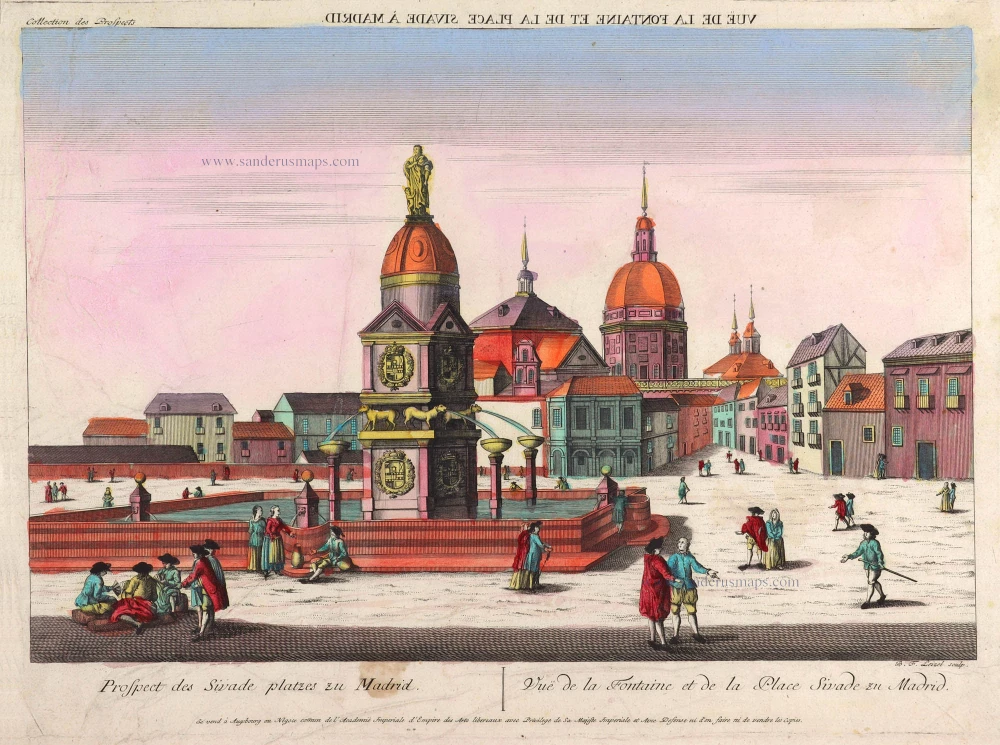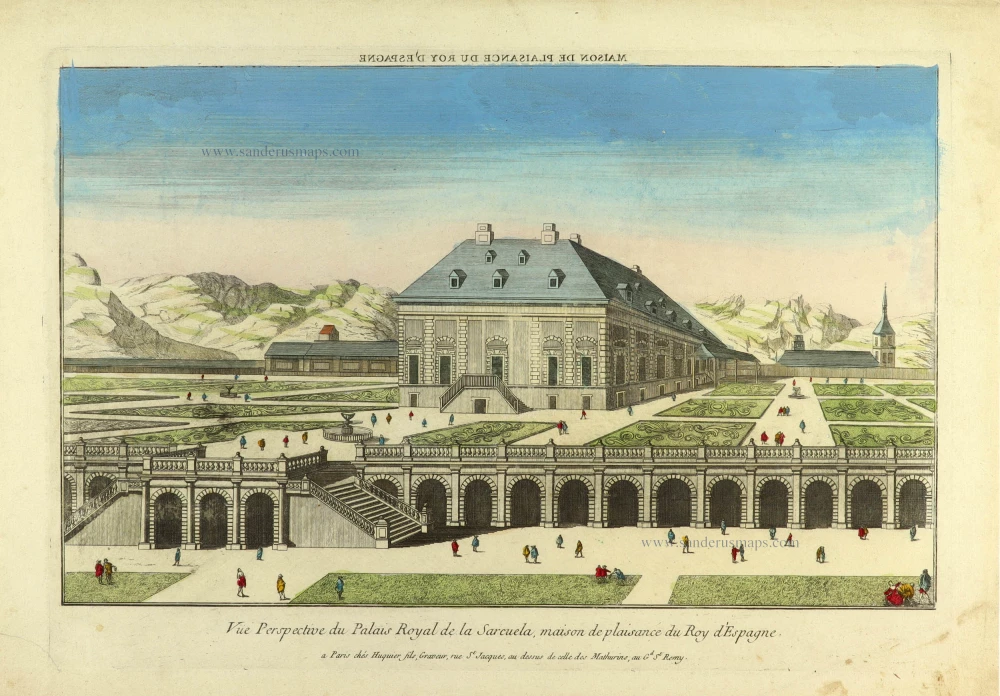Perspective view of Madrid. c. 1770
Prints called perspective views, or vues d’optique, were created specifically to be viewed with the perspective glass. These prints used dramatic linear perspectives to maximize the sense of depth. The titles mainly were printed backwards so that they could be read when reflected in the mirror. Perspective views mostly depicted foreign landscapes, street views, architectural interiors, and political or historical events.
Optical View (French: Vue d'optique)
An optical view is a type of 18th-century hand-coloured engraved print to be viewed through a special optical device. It depicts architectural, city, or landscape scenes and is designed to give a strong illusion of depth and perspective when seen through a magnifying lens or viewing box. Characteristic of an optical view is the reversed inscription: The titles or captions were often printed backwards, because the viewing device used a mirror that would flip the image right-side up again. The artists enhanced depth with bold converging lines and bright colours. The optical views were used for popular entertainment and education, a way for people to "travel" visually. They originated in France and England around the 1740s and became fashionable across Europe. They were often sold by travelling print sellers or displayed in fairs and parlours.
Prospect des Sivade platzes zu Madrid / Vuë de la Fontaine et de la Place Sivade zu Madrid.
Item Number: 29732 Authenticity Guarantee
Category: Antique maps > Europe > Spain and Portugal
Old, antique perspective view of New York.
Title: Prospect des Sivade platzes zu Madrid / Vuë de la Fontaine et de la Place Sivade zu Madrid.
B.F. Leizel sculp.
Engraver: B.F. Leizel.
Date: c. 1770.
Copper engraving, printed on paper.
Image size: 315 x 415mm (12.4 x 16.34 inches).
Sheet size: 365 x 450mm (14.37 x 17.72 inches).
Verso: Blank.
Condition: Original coloured, stain at lower centre.
Condition Rating: A.
Separate publication.
Prints called perspective views, or vues d’optique, were created specifically to be viewed with the perspective glass. These prints used dramatic linear perspectives to maximize the sense of depth. The titles mainly were printed backwards so that they could be read when reflected in the mirror. Perspective views mostly depicted foreign landscapes, street views, architectural interiors, and political or historical events.
Optical View (French: Vue d'optique)
An optical view is a type of 18th-century hand-coloured engraved print to be viewed through a special optical device. It depicts architectural, city, or landscape scenes and is designed to give a strong illusion of depth and perspective when seen through a magnifying lens or viewing box. Characteristic of an optical view is the reversed inscription: The titles or captions were often printed backwards, because the viewing device used a mirror that would flip the image right-side up again. The artists enhanced depth with bold converging lines and bright colours. The optical views were used for popular entertainment and education, a way for people to "travel" visually. They originated in France and England around the 1740s and became fashionable across Europe. They were often sold by travelling print sellers or displayed in fairs and parlours.





